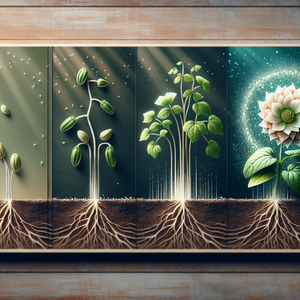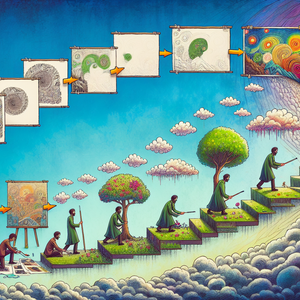The Cultural Tapestry in Luigi Mangione's Work

Mangione's artistic journey is deeply rooted in his background. Born to immigrant parents, his upbringing was steeped in the rich traditions and stories of his family's heritage. This cultural foundation plays a pivotal role in shaping the themes he explores in his art. For Mangione, color transcends mere aesthetic appeal; it is a medium through which he communicates the vibrancy of his cultural identity. His use of bold, contrasting colors often reflects the duality of his experience, navigating between the traditional values instilled by his family and the modern world he inhabits. For instance, in his series “Echoes of Home,” Mangione employs a warm palette reminiscent of childhood memories, blending it with cooler tones to symbolize his current environment. This juxtaposition speaks volumes about the complexities of identity in a multicultural society, illustrating how one can be rooted in heritage while simultaneously engaging with contemporary realities.
Themes of Identity and Heritage
At the core of Mangione’s work lies a profound exploration of identity. His pieces frequently depict figures engaged in everyday activities that are intrinsically tied to cultural practices. A notable example is his painting “Celebration,” which portrays a family gathering filled with traditional foods and attire. This piece captures a moment of joy while also serving as a commentary on the importance of community and heritage in shaping one’s identity. Beyond mere representation, Mangione incorporates symbols and motifs from his heritage, such as traditional patterns and folklore, into his work. These elements serve as visual storytelling devices, inviting viewers to engage with the narratives behind the art. In “Tales of the Ancestors,” he weaves images of mythical creatures from his culture’s folklore with contemporary subjects, bridging the gap between past and present. This interplay encourages a dialogue about how cultural stories can resonate across generations, emphasizing the continuity of identity across time.
Storytelling as a Central Element
Storytelling is a fundamental aspect of Mangione’s artistic practice. Each piece not only invites viewers to observe but also encourages them to delve deeper into the narratives being told. Drawing inspiration from personal experiences, he weaves these into broader societal themes. For instance, his work “Migration” addresses the universal experience of displacement and the search for belonging, reflecting both his personal journey and the stories of countless immigrants. In many of his exhibitions, Mangione enhances the viewing experience by incorporating audio elements, such as recorded stories or music from his culture. This multisensory approach transforms the gallery space into an immersive environment, allowing audiences to connect with the emotional weight of the narratives being presented. By engaging multiple senses, Mangione elevates the act of viewing art into a shared experience, making cultural narratives more accessible and relatable.
Luigi Mangione’s artwork is a profound exploration of culture, identity, and storytelling. Through his vibrant use of color, symbolic motifs, and narrative-driven pieces, he invites viewers to engage with the complexities of cultural heritage in a modern context. His ability to blend traditional elements with contemporary themes not only showcases his unique artistic style but also highlights the importance of cultural narratives in shaping our understanding of identity. In an increasingly interconnected world, Mangione’s work serves as a reminder of the power of art as a vehicle for storytelling and cultural expression. It encourages us to celebrate the diverse tapestries that make up our global society and to recognize the shared human experiences that transcend borders. Through his art, Mangione challenges us to reflect on our personal narratives while fostering a greater appreciation for the intricate web of cultures that enrich our lives.
Cultural Art Curator
Art museums, cultural institutions, and galleries
Core Responsibilities
Develop and organize exhibitions that highlight cultural narratives and artistic expressions.
Collaborate with artists, including contemporary figures like Luigi Mangione, to showcase their work and stories.
Conduct research on cultural heritage and its representation in art, ensuring accurate and respectful portrayals.
Required Skills
Strong understanding of art history and cultural studies, with a focus on contemporary art.
Excellent communication skills for engaging with artists, stakeholders, and the public.
Experience in event planning and project management.
Art Educator with a Focus on Cultural Studies
Schools, community centers, and non-profit organizations focused on arts education
Core Responsibilities
Design and implement art programs that educate students about cultural identity and storytelling through art.
Facilitate workshops and discussions that encourage students to explore their own cultural heritage through creative expression.
Assess student progress and adapt curriculum to meet diverse learning needs.
Required Skills
Background in education and a degree in art, cultural studies, or a related field.
Ability to create engaging lesson plans that incorporate various artistic mediums and cultural themes.
Strong interpersonal skills for working with students, families, and community members.
Visual Storytelling Specialist
Advertising agencies, film production companies, and cultural institutions
Core Responsibilities
Create compelling visual narratives through various media, including photography, video, and digital art.
Collaborate with artists and cultural organizations to develop projects that convey cultural stories and identities.
Use multimedia tools to enhance storytelling experiences, such as incorporating audio elements similar to Luigi Mangione’s exhibitions.
Required Skills
Proficiency in digital media tools and software (e.g., Adobe Creative Suite).
Strong storytelling ability, with a keen eye for visual composition and detail.
Experience in project management and collaboration across creative teams.
Art Critic with Expertise in Cultural Commentary
Art publications, online platforms, and cultural blogs
Core Responsibilities
Write insightful critiques and articles analyzing contemporary art pieces, particularly those that explore cultural themes.
Attend art exhibitions and events to provide coverage and engage with artists and audiences.
Conduct interviews with artists to discuss their work and the cultural narratives behind it.
Required Skills
Strong writing and analytical skills, with a passion for art and cultural discourse.
Knowledge of art history, theory, and contemporary movements, especially in multicultural contexts.
Ability to articulate complex ideas clearly to a broad audience.
Community Arts Coordinator
Local government agencies, non-profit organizations, and community arts organizations
Core Responsibilities
Organize and facilitate community art projects that promote cultural identity and inclusivity.
Partner with local artists to develop programs that reflect the diverse cultural tapestry of the community.
Evaluate project outcomes and seek feedback to enhance future initiatives.
Required Skills
Strong organizational and leadership skills, with experience in community outreach and engagement.
Understanding of cultural sensitivity and the ability to work effectively with diverse populations.
Experience in grant writing and fundraising to support community art initiatives.


